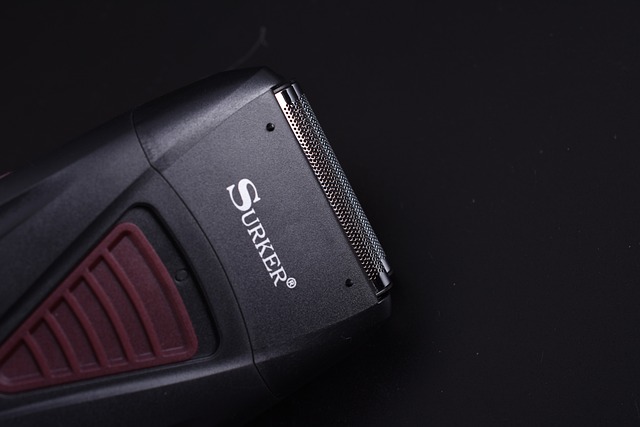How Do Different Drying Cycles Affect Energy Efficiency?
Let’s break it down. When you select a standard drying cycle, it’s like choosing a one-size-fits-all approach. It might get the job done, but it can be inefficient if your clothes don’t need that much heat or time. In contrast, high-efficiency drying cycles are like customized meal plans—they use sensors to gauge moisture levels and adjust the drying time and heat accordingly. This means they only use the energy necessary to get your clothes perfectly dry, avoiding overuse of electricity.
Think of it this way: using a regular cycle is like driving a car at full speed regardless of traffic conditions, while using a high-efficiency cycle is akin to driving with a GPS that adjusts your speed based on traffic. The latter saves you time and energy.
Also, there are specific cycles designed for different fabric types, such as delicates or heavy towels. These specialized cycles optimize energy use by tailoring heat and drying time to the fabric’s needs. So, if you’re drying towels, a cycle that’s too short might leave them damp and force you to run another cycle, wasting energy.
In essence, choosing the right drying cycle is crucial for keeping your energy consumption in check. By delving into the specifics of each cycle and understanding their impact on energy efficiency, you can make smarter choices that benefit both your wallet and the environment.
The Energy Efficiency Equation: How Drying Cycles Impact Your Utility Bill
Think of your dryer as a hungry monster, devouring energy with every spin and tumble. Each time you toss in a load of wet clothes, the dryer has to work its magic, converting electricity into heat to get everything dry. This process can be quite power-hungry, especially if you’re running multiple cycles a week.
Here’s a little eye-opener: the longer your drying cycle, the more energy you’re consuming. It’s like leaving your car engine running while you’re parked—wasting fuel that doesn’t need to be used. For instance, a typical dryer might consume around 3-6 kilowatt-hours (kWh) per load. That adds up quickly, especially if you’re drying multiple loads.
But what if I told you there are ways to make that monster a little less ravenous? Simple changes like cleaning the lint filter regularly or not overloading the dryer can help it run more efficiently. Think of the lint filter as the “diet plan” for your dryer; a clean filter ensures better airflow and reduces drying time. And just like a well-planned diet can help you save on groceries, a well-maintained dryer can lower your utility bill.
Also, consider air-drying clothes when you can. It’s like putting your clothes on a low-calorie diet; it takes longer, but it’s a lot easier on your wallet and the environment. In the long run, understanding and optimizing your drying cycles can be a game-changer for your utility bills. So next time you do laundry, remember that a few tweaks might save you more than you think!
Cycle Savvy: Unlocking the Secrets to Maximizing Energy Efficiency in Your Dryer
First off, keep it clean! Your dryer’s lint filter isn’t just there for show. A clean filter can boost efficiency by up to 30%. Think of it like the dryer’s way of taking a deep breath. If the filter’s clogged, it’s like trying to breathe through a straw—nothing works well. So, make it a habit to clean that filter before every load.
Next up, don’t overload or underload your dryer. It’s a bit like cooking—you wouldn’t stuff the oven full of dishes, right? Overloading makes it work harder and underloading wastes energy. Aim for a happy medium, so your dryer has enough room to tumble clothes efficiently. And remember, small loads dry faster, so if you’ve got just a few items, run a smaller cycle.
Also, take advantage of dryer balls. They’re not just for fun; these little guys can help separate clothes and increase air circulation, which means quicker drying times. It’s like having a little team of helpers inside your dryer, working to get your clothes dry faster.
Lastly, use the moisture sensor feature if your dryer has one. This nifty tool detects when your clothes are dry and automatically stops the cycle. It’s like having a personal assistant who knows exactly when your laundry is done—no need to guess or waste energy running the dryer longer than necessary.
From Short to Long: Which Drying Cycle Saves the Most Energy?
The short drying cycle is like taking a quick nap—brief but might not always get the job done. It often leaves clothes damp and makes you run the dryer again. This extra run can actually use more energy than a single, longer cycle. Imagine spending more time and resources to fix something that wasn’t fully done right in the first place.
On the flip side, the long drying cycle is akin to a full night’s sleep—thorough and usually more effective. It gives your clothes ample time to dry completely, reducing the need for additional drying sessions. Although it might seem like a bigger time investment, it often results in less overall energy use since you’re not repeatedly running the dryer.
Which cycle ultimately saves more energy? It boils down to how effective each cycle is in drying your clothes. If a long cycle dries everything in one go, it’s likely more efficient. But if your short cycle leaves you with a pile of damp laundry that requires another spin, you might be better off sticking to the longer cycle from the start.
In the grand scheme, it’s about balance. Efficiency isn’t just about choosing the shortest path but the most effective one. So, next time you hit that dryer button, think of it as choosing between a brief snack and a full meal—sometimes, a little more time can save you a lot more in the long run.
Eco-Friendly Drying: How to Choose the Most Efficient Cycle for Your Dryer
Start by looking for a dryer with an energy-efficient setting. These cycles are designed to use less electricity while still delivering the same great results. Just like choosing a low heat setting can save energy in cooking, opting for these eco-friendly cycles can significantly reduce your energy consumption.
Next, consider the moisture sensor feature. Modern dryers often come with sensors that detect when your clothes are dry and automatically stop the cycle. This not only prevents over-drying—which wastes energy—but also helps protect your clothes from unnecessary wear and tear. Imagine your dryer as a smart chef who knows just when to turn off the oven to keep your meal perfect without burning it.
Another tip is to use the timed dry cycle judiciously. While this option gives you control, it’s easy to overestimate how long your clothes need to dry. If you’re unsure, start with a shorter time and check your clothes. You might be surprised at how effective a shorter cycle can be, much like how a quicker cook time can sometimes yield delicious results.
Lastly, don’t overlook the importance of regular maintenance. Clean your lint filter and vents frequently. A well-maintained dryer works more efficiently, reducing energy usage and extending the life of your appliance. Think of it as giving your dryer a little TLC to keep it running smoothly and eco-friendly.
The Drying Cycle Dilemma: How Different Settings Affect Your Energy Consumption

When you crank up the heat to the highest setting, your clothes dry faster, but at a steep cost. High heat cycles consume more energy, which translates to higher utility bills. It’s tempting to go for that “quick dry” option, but if you use it frequently, you might be sacrificing more than just a few extra minutes.
On the flip side, using a lower heat setting takes longer but is much kinder to your wallet and the environment. Think of it like letting a cake bake slowly—it might take a bit longer, but it’s more energy-efficient. Similarly, a low heat cycle uses less electricity and can be gentler on your clothes, extending their lifespan.
Moreover, many modern dryers come with moisture sensors that automatically adjust drying times based on how damp your clothes are. These sensors can be a game-changer. They prevent over-drying, which saves energy and keeps your clothes from shrinking or getting damaged. It’s like having a smart chef who knows exactly when your cake is done without you having to check it every five minutes.
So next time you’re about to choose a drying cycle, remember: higher heat might seem like a faster option, but the long-term effects on your energy bill and clothes could be more expensive than you think. Sometimes, slower and cooler is the smarter choice.
Energy Savings Unveiled: Comparing Drying Cycles for Maximum Efficiency

Drying cycles can be the secret sauce to saving energy and cutting down on those hefty utility bills. Different cycles are designed to handle various fabrics and loads, and some are far more efficient than others. For instance, the “eco” or “energy saver” cycle is like the hybrid car of drying cycles – it uses less energy and is gentler on your clothes. It might take a bit longer, but the trade-off is lower energy consumption.
On the other hand, the “high heat” cycle is like pushing the pedal to the metal – it gets the job done quickly but can chew through energy like nobody’s business. This cycle might be tempting when you’re in a hurry, but it could end up costing you more in the long run.
Also, consider using the “sensor dry” feature, if your dryer has one. It’s like having a personal assistant who knows exactly when your clothes are perfectly dry, preventing over-drying and saving you energy. Think of it as a GPS for your laundry – it gets you to your destination efficiently without wasting any extra fuel.
Ultimately, choosing the right drying cycle is about balance. You want to dry your clothes efficiently without breaking the bank or causing unnecessary wear and tear on your fabrics. So next time you’re about to start a load, think of the drying cycle as your energy-saving strategy – the right choice can make a big difference.

